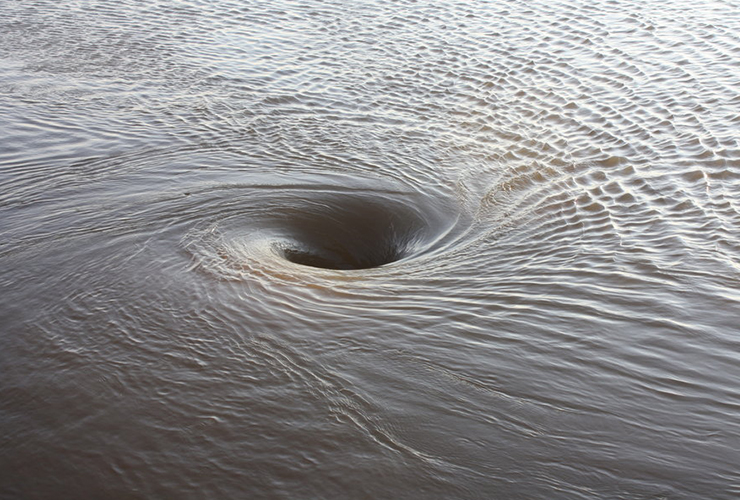Combating Lost Circulation Using Underbalanced Drilling & CTD
On November 20, 1980, Leonce Viator Jr, accompanied by his nephew, took his boat out onto Lake Peigneur in Louisiana to catch some catfish. At the same time on a nearby drilling rig, the crew noticed that the drill bit had just become stuck. This was a sign that they had just accidentally drilled into a salt mine of the Diamond Crystal Salt company. The rig started to tilt and was eventually consumed into the ground. Eleven barges and a tugboat were sucked into the ensuing vortex. Leonce just managed to make it to shore and the last thing he saw was his boat and the tree it was tied to, disappearing down the vortex.
This was an extreme example of a lost circulation event when drilling. Not all lost circulation situations are as dramatic, or environmentally questionable, but they can still cause problems with drilling, non-productive time, increased costs, damage to the reservoir and delay in bringing the well on line after drilling.
Lost circulation can be either as a result of the properties of the formation or it might be induced by drilling conditions or practices. Ultimately, although the cause might be different the result is the same: Drilling fluid which would normally flow up the annulus gets lost to the formation, lost circulation material (LCM) may need to be added to stem the flow and this can in turn permanently damage part of the reservoir that might have turned out to be the most productive zone of the reservoir due to its high permeability. There is a risk of differential sticking and also of a blowout as the pressure in the annulus drops.
Natural fractures or low pressure zones with high permeability are both risk factors for lost circulation. Lost circulation issues can occur all over the world but some examples for the Austin Chalk, Buda and Georgetown reservoirs in South Texas, USA, can be found in several SPE papers.
Another way in which the formation can become fractured is from the use of excessive mud weights, run-in-hole speeds or annular build-up of drill cuttings, all of which can cause the pressure in the borehole to exceed the fracture gradient of the formation. This is particularly important when drilling overbalanced because the mud column is weighted up to contain formation pressure so the baseline pressure is already high.
With underbalanced drilling, the main lost circulation problems are avoided because the pressure in the wellbore is lower than that of the formation. Differential sticking is no longer a risk and if a zone starts to produce, the flow can be controlled by the choke at surface and the produced fluids can be handled with the flow back equipment that is a part and parcel of an underbalanced drilling set-up.
Coiled tubing drilling is the only way to achieve underbalanced conditions at all times when drilling, so is an ideal technology to consider for projects where lost circulation is a problem.
To complete the initial story, Lake Peigneur changed from being a fresh water lake, 11ft deep, to being a salt water lake, up to 1300ft deep. Leonce never went fishing on Lake Peigneur again.
Author: Toni Miszewski
Published: 21st July 2017


Comment
Your Email
Enter your comment here:
Enter Your Comment
Your Email
Comments












+44 1392 933 100 | +1 800-868-1562